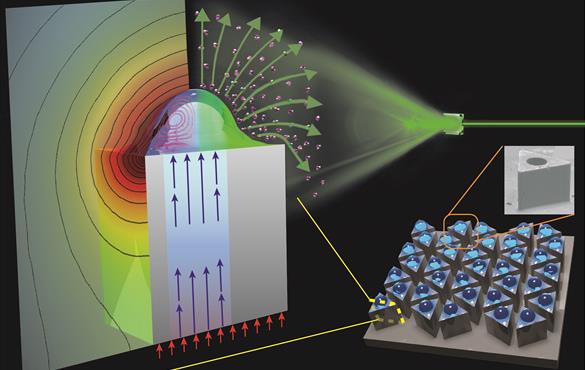Taking the heat out
Damena Agonafer will identify different modes of heat transfer during the evaporation process of nonsymmetrical microdroplets as a way to dissipate heat from electronic devices with an NSF CAREER Award

People around the world rely on high-tech electronic devices for daily business, transportation and communication. But those devices generate heat that has to dissipate for the devices to operate correctly. A mechanical engineer and materials scientist in the McKelvey School of Engineering at Washington University in St. Louis is developing an efficient two-phase cooling technology designed to cool future electronics in data centers, electric vehicles and artificial intelligence servers.
Damena Agonafer, assistant professor of mechanical engineering & materials science, received a five-year, $500,000 CAREER Award from the National Science Foundation to identify different modes of heat transfer during the evaporation process of nonsymmetrical microdroplets that sit atop micropillar structures on a cooling platform. CAREER awards support junior faculty who model the role of teacher-scholar through outstanding research, excellence in education and the integration of education and research within the context of the mission of their organization. One-third of current McKelvey Engineering faculty have received the award.
Agonafer's hollow micropillar structures, designed to dissipate heat in electronics, hold droplets of liquid on the surface. The bioinspired structure is based on a millennia-old insect called a springtail that can breathe through its skin, even buried in soil, through sharp edges on its surface. Like on the springtail, each droplet on the micropillar has sharp edges that form an energy barrier that keeps the liquid from spilling over. Agonafer has been working on the microstructure since he was a postdoctoral researcher at Stanford University and has determined the optimal size and shape of the droplet in previous studies.
"Now that we have this droplet, we want to study how it behaves and how the evaporation occurs," he said. "We're trying to understand the global and local behavior of asymmetric droplet evaporation."
Initially, Agonafer worked with circular micropillars on which the droplet was symmetrical in shape. Recently, however, he has been working with asymmetrical micropillars, including triangular or square shaped, to determine any change in the heat transfer performance. In this newly-funded work, he plans to sustain a droplet with a consistent size and shape using a constant pressure microfluidic system. He is working with the university's Office of Technology Management to obtain a patent on his technology.
"A significant portion of this work is to measure the local temperature and velocity profiles so we can understand what we call the micro-convection effects inside the droplet," he said. "Other studies have focused on how these currents behave in a symmetrical drop, but no one knows how they behave in asymmetric droplets."
As part of the grant, Agonafer plans work with high-school students underrepresented in the STEM fields by directing a summer research program to incorporate the results from this work into the curriculum designed to teach thermal science, surface science and electronics cooling. In addition, he plans a research experience program for teachers to help them with curriculum development. He also plans to work with industry to expose more undergraduate students to design competitions, as well as to develop a "Face-to-Tech" program to expose more engineering students from backgrounds underrepresented in the STEM fields to technology companies to build a pipeline to internships and jobs in industry.
Research in Agonafer's Nanoscale Energy and Interfacial Transport (NEIT) lab is funded by Cisco Systems and Google Inc. Earlier this year, he received the Electronics and Photonics Packaging Division 2019 Early Career Award from the American Society of Mechanical Engineers. He is a faculty adviser to the Institute of Materials Science and Engineering, a member of the Center for Solar Energy and Energy Storage and faculty adviser to the National Society of Black Engineers (NSBE), all at Washington University.



